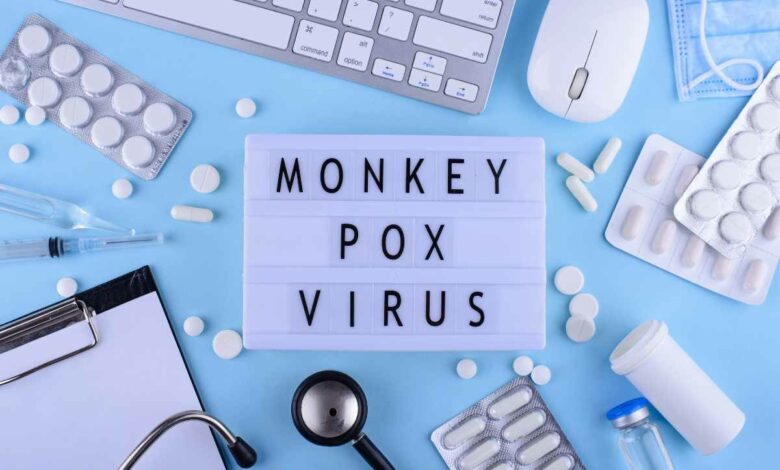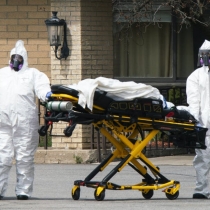
What you need to know about Mpox
What is mpox (monkeypox)?
Mpox is an illness caused by the monkeypox virus according to information from the World Health Organization (WHO). It is a viral infection which can spread between people, mainly through close contact, and occasionally from the environment to people via things and surfaces that have been touched by a person with mpox.
In settings where the monkeypox virus is present among some wild animals, it can also be transmitted from infected animals to people who have contact with them.
Following a series of consultations with global experts, WHO has begun using a new preferred term “mpox” as a synonym for monkeypox.
The World Health Organization declared the rising cases of mpox in the Democratic Republic of the Congo (DRC) and several other African countries as a Public Health Emergency of International Concern (PHEIC) on Wednesday 14th, August 2024.
WHO first declared the Mpox outbreak a Public Health Emergency of International Concern (PHEIC) on On July 23, 2022. To date, some cases have been detected and registered in Uganda.
Mpox, previously called Monkeypox is a viral zoonotic disease (a virus transmitted to humans from animals) that occurs primarily in tropical rainforest areas of central and west Africa and is occasionally exported to other regions.
Its symptoms are like those seen in smallpox patients, though less severe.
Signs and symptoms
- Skin rash
- Fever
- Sore throat
- Headache
- Body aches
- Backpain
- Low energy
- Swollen lymph nodes
According to information from WHO, Mpox can cause a range of signs and symptoms. While some people have less severe symptoms, others may develop more serious illness and need care in a health facility. Common symptoms of mpox include a rash which may last for 2–4 weeks. This may start with, or be followed by, fever, headache, muscle aches, back pain, low energy and swollen glands (lymph nodes).
The rash looks like blisters or sores, and can affect the face, palms of the hands, soles of the feet, groin, genital and/or anal regions. These lesions may also be found in the mouth, throat, anus, rectum or vagina, or on the eyes. The number of sores can range from one to several thousand. Some people develop inflammation inside the rectum (proctitis) that can cause severe pain, as well as inflammation of the genitals that may cause difficulties urinating.
In most cases, the symptoms of mpox go away on their own within a few weeks with supportive care, such as medication for pain or fever. However, in some people, the illness can be severe or lead to complications and even death. New-born babies, children, people who are pregnant and people with underlying immune deficiencies such as from advanced HIV disease may be at higher risk of more serious mpox disease and death.
Severe disease due to mpox may include larger, more widespread lesions (especially in the mouth, eyes, and genitals), secondary bacterial infections of the skin or blood and lung infections. Complications can include severe bacterial infection from skin lesions, mpox affecting the brain (encephalitis), heart (myocarditis) or lungs (pneumonia), and eye problems. People with severe mpox may require hospitalization, supportive care and antiviral medicines to reduce the severity of lesions and shorten time to recovery.
According to available data, between 0.1% and 10% of people with mpox have died. It is important to note that death rates in different settings may differ due to several factors, such as access to health care and underlying immunosuppression, including because of undiagnosed HIV or advanced HIV disease.
How is Mpox spread?
- Person-to-person contact
- Close contact with skin lesions and body fluids.
- Inhaling contaminated particles or viruses.
- Contaminated materials, e.g., needles, tattoos, bedding, linens, clothing, eating utensils, and sex toys, among others.
- Mpox is transmitted to humans through close contact with an infected person or animal or with contaminated material.
Who is at risk of Mpox?
People in close interaction with Mpox, patients, e.g., household members and sexual partners (including commercial sex workers).
People taking care of Mpox patients without the correct use of personal protective equipment People who hunt, kill, handle, butcher, and prepare animals such as squirrels, rats, mice, and monkeys.
People who work in laboratories without the correct use of personal protective equipment. Children, pregnant women, and those who may be weak due to other health conditions.
People who have many sexual partners and/ or frequent anonymous sexual partners.
Even though some people may be more at risk than others, it is important to remember that anyone, anywhere, can get monkeypox.
How do you protect yourself from infection of Mpox?
Avoid close (face-to-face, skin-to-skin, mouth-to-skin, and mouth-to-mouth) contact with people who have been confirmed to have monkeypox or who have signs and symptoms of monkeypox.
Avoid touching or sharing personal items like bedding, eating utensils, clothes, phones, or other belongings of a person who has the signs and symptoms of monkeypox.
Avoid contact with all wild animals (alive or dead), especially those known to carry the virus, such as rodents or monkeys, and those that appear sick or have been found dead.
Avoid eating wild animals (squirrels, rats, mice and monkeys).
Smallpox vaccine can be given to people who come into close contact with infected persons or those at high risk of infection.

Is there a treatment for mpox?
According to information from the World Health Organization, it is noted that many years of research on therapeutics for smallpox have led to the development of products that may also be useful for treating mpox. For example, an antiviraldeveloped to treat smallpox (tecovirimat) was approved in January 2022 by the European Medicines Agency for the treatment of mpox under exceptional circumstances. It further notes that experience with these therapeutics in the context of an outbreak of mpox is growing but still limited.
For this reason, their use is usually accompanied by enrolment in a clinical trial or expanded access protocol accompanied by the collection of information that will improve knowledge on how best to use them in future.
Links
- 40 views












































Join the conversation